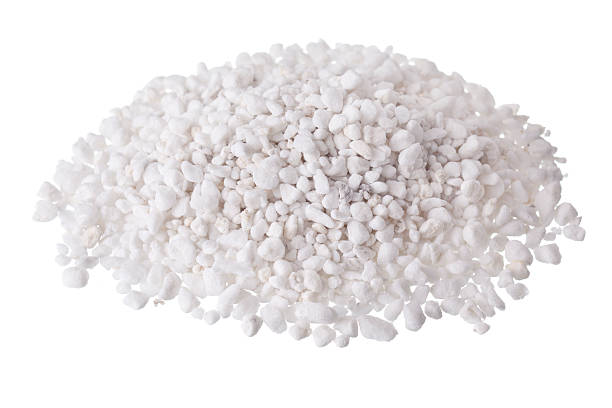When it comes to enhancing the quality of your soil and promoting healthy plant growth, choosing the right soil amendment is crucial. Two popular options for improving soil conditions are rice hulls and perlite. In this article, we will compare rice hulls and perlite, examining their advantages, disadvantages, and their impact on the environment. By the end, you will have a clear understanding of which option is best suited for your gardening needs.
Rice Hulls: Harnessing the Power of Nature’s Byproduct

Rice hulls are the protective casings of rice grains, similar to the husk of corn. Once the rice has been harvested, these hulls are typically removed and disposed of as waste. However, someone had the brilliant idea of repurposing this byproduct into something useful for gardeners.
One of the significant advantages of using rice hulls is their positive environmental impact. Unlike perlite, which is a non-renewable resource that requires mining from the earth, rice hulls are completely renewable. As long as rice is being grown, there will be an abundant supply of rice hull byproducts available for use. This sustainable aspect of rice hulls makes them an attractive option for environmentally conscious gardeners.
But the benefits of rice hulls don’t end there. When added to soil, rice hulls improve its texture, providing better drainage and aeration. They also contribute to the soil’s water retention capabilities, ensuring that your plants receive the appropriate moisture levels. In addition, rice hulls contain silica, which strengthens plant cell walls, enhancing their immunity to diseases, drought, and heat.
To incorporate rice hulls into your garden, spread a 2-inch layer over your soil and mix them into the top 6-12 inches. This will help improve the soil structure and provide numerous benefits for your plants. Rice hulls are available in various forms, such as horticultural grade bags suitable for greenhouses, raised bed gardens, and potted plants.
While rice hulls offer numerous advantages, it’s important to consider their limitations. Over time, rice hulls begin to decompose, causing the soil to compress. To counteract this, adding more rice hulls to the soil annually can help maintain its structure and prevent compression. Another potential disadvantage is that rice hulls can lead to a nitrogen deficiency in the soil, as microorganisms and bacteria use nitrogen to break down materials high in carbon, such as rice hulls. This can be mitigated by adding a nitrogen-rich fertilizer if necessary.
Perlite: Unlocking the Potential of Lightweight Soil Amendment

Perlite, on the other hand, is a volcanic glass that undergoes a unique manufacturing process to create a lightweight soil amendment. It is formed by heating volcanic glass to high temperatures, causing it to expand and trap air in microscopic compartments. The resulting perlite is lightweight, providing excellent aeration and drainage for soil.
Perlite offers several benefits for plants and gardens. It helps loosen compacted soil, preventing it from becoming too dense and allowing roots to grow more easily. Its porous structure improves water retention while ensuring excess water drains efficiently, reducing the risk of root rot. Perlite is also commonly used in soil mixes for propagating plants, thanks to its ability to hold moisture and provide a favorable environment for root development.
While perlite offers excellent soil benefits, it’s essential to be aware of its potential drawbacks. Firstly, perlite is a non-renewable resource that requires mining, which can have negative environmental impacts. Additionally, its lightweight nature makes it prone to being blown away by strong winds or washed away by heavy rainfall. To minimize these issues, it’s recommended to handle perlite with care, wear protective equipment, and avoid inhaling the dust during handling.
When using perlite, it’s crucial to consider its impact on the environment. Mining and processing perlite require significant energy consumption, contributing to carbon emissions and environmental degradation. Moreover, the appearance of perlite in soil mixes may not be visually appealing to some gardeners, as it resembles small white balls. It’s also worth noting that perlite can be relatively costly, particularly when compared to rice hulls.
To incorporate perlite into your soil mix, a common ratio is one part loam, one part peat, and part perlite. This combination provides optimal soil structure, aeration, drainage, and water retention.
Choosing the Right Soil Amendment
When it comes to selecting between rice hulls and perlite, several factors should be considered. If environmental sustainability is a priority for you, rice hulls offer a clear advantage as a renewable resource that contributes to waste reduction. Rice hulls also provide excellent soil benefits, such as improved texture, drainage, and silica content.
On the other hand, perlite offers lightweight and efficient aeration and drainage properties, making it an excellent choice for preventing soil compaction and promoting root growth. However, its non-renewable nature and potential environmental impact should be taken into account.
Ultimately, the choice between rice hulls and perlite depends on your specific gardening needs, preferences, and priorities. Consider factors such as cost, environmental impact, soil conditions, and the specific plants you are cultivating. It may even be possible to use a combination of both amendments to achieve the desired soil properties.
Conclusion
In the debate of rice hulls vs. perlite, both options offer distinct advantages and considerations. Rice hulls excel in their environmental sustainability, renewability, and soil-enhancing properties. On the other hand, perlite provides lightweight aeration and drainage, making it an excellent choice for preventing soil compaction.
By understanding the unique qualities of rice hulls and perlite and evaluating your specific gardening requirements, you can make an informed decision on which soil amendment is best suited for your plants. Whether you choose rice hulls, perlite, or a combination of both, enhancing your soil’s quality will ultimately result in healthier and more thriving plants in your garden.






